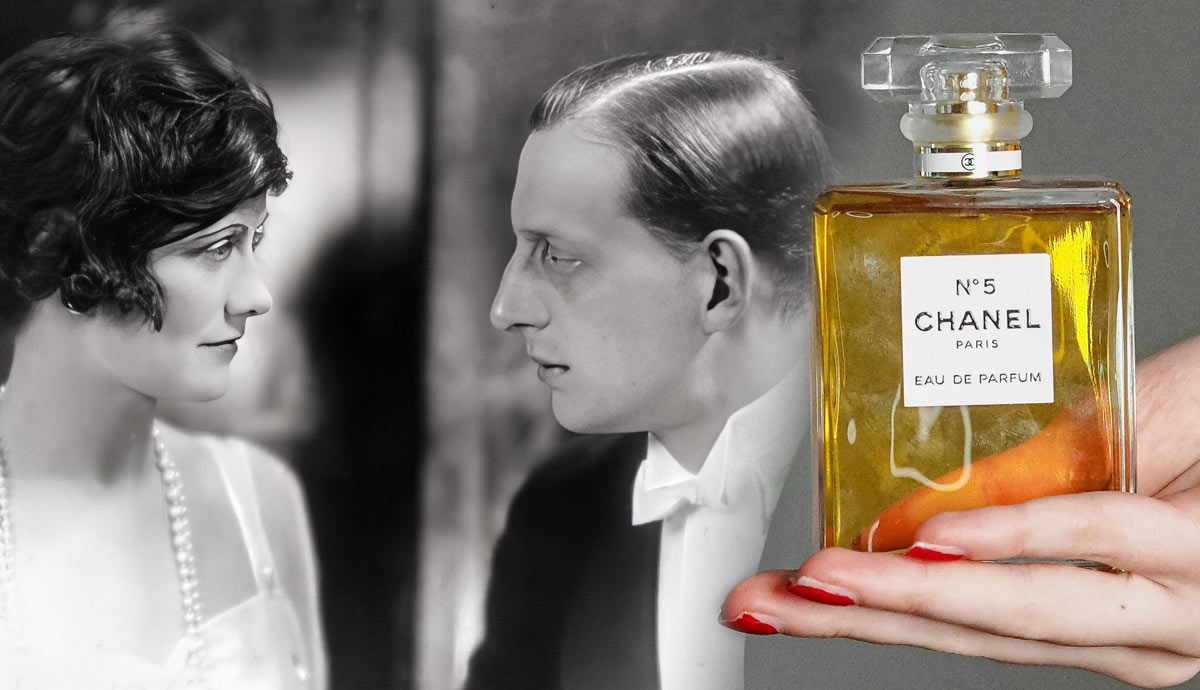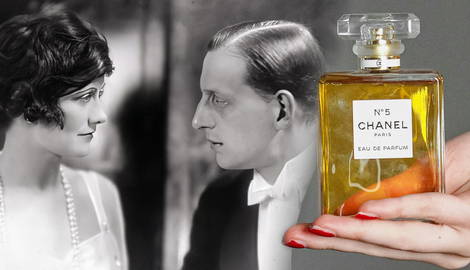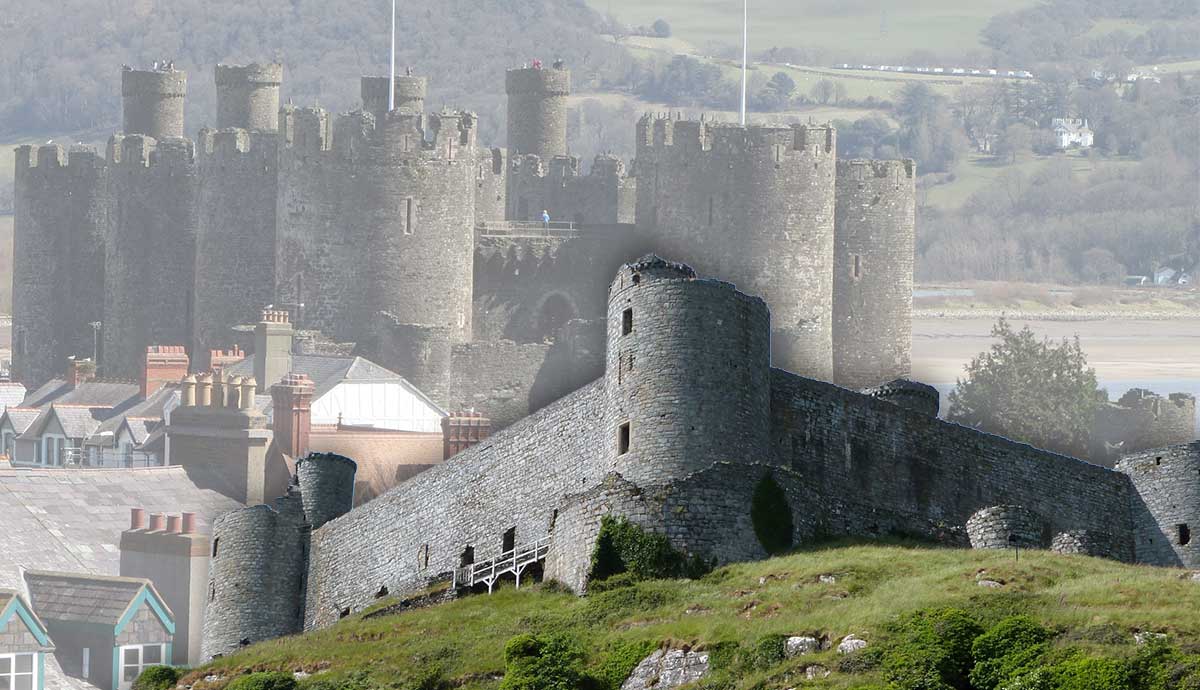
During the 1920s, European fashion reflected the lure of exotic trends. From peasant shirts and embroidered dresses to jeweled kokoshnik tiaras, this era saw a strong Slavic influence on Western couture thanks to thousands of émigrés who fled the Bolshevik Revolution. While Coco Chanel never visited Russia, she fused its folk motifs with her emergent Paris brand. As a rising star in the fashion industry, Chanel’s “Slavic Period,” sometimes also known as her “Russian period,” helped Chanel become a Jazz Age fashion trendsetter.
A Fashion Icon

Growing up poor in a Catholic orphanage, Gabrielle Bonheur “Coco” Chanel decided to make a name for herself. Chanel’s rise to French fashion fame represents a rags-to-riches story.
After a brief career as a cabaret singer, Chanel used her stitching skills and charm to navigate her way into the highest echelons of society. Smart, opportunistic, and practical, Chanel rose from obscurity to create one of the most influential fashion brands in history.
Chanel is known for inventing iconic style landmarks, such as the little black dress and the Chanel No. 5 fragrance, at the height of the Flapper era.
Known for her sleek and minimalist designs, Chanel’s fascination with Eastern European embroidery, beadwork, and folk patterns dominated her “Slavic Period” designs. She was not alone. A love for exoticism characterized the Roaring Twenties, a decade known for its decadence, consumerism, and zest for life.
In 1920, Chanel found herself inspired to new creative heights by a passionate affair with a Romanov grand duke.
A Romantic Affair

It all started with a whirlwind romance in the south of France.
In the summer of 1920, Coco Chanel took a trip to Biarritz. The vacation took an unexpected turn when one of Chanel’s friends introduced her to Grand Duke Dmitri Pavlovich Romanov, the cousin of Tsar Nicholas II.
Chanel had an ongoing liaison with composer Igor Stravinsky, while Dmitri was involved with Chanel’s friend, the French opera singer and actress Marthe Davelli. Their friendship did not stop Chanel from pursuing the grand duke. After meeting Coco, who was almost a decade older than him, Dmitri and Marthe parted ways. Marthe reportedly let Chanel take the Grand Duke because he was getting “a little expensive for me” (Rappaport, After the Romanovs, 2023, p. 116).
Attracted to his tall, athletic figure, large, sad eyes, and famous Romanov charm, Coco fell for Dmitri fast. Despite poor health, he led a sporting life. According to The Flight of the Romanovs, Chanel later sighed: “These grand dukes, they are all the same, an admirable face behind which there is nothing, green eyes, broad shoulders, fine hands . . . the most peaceful people, shyness itself . . . Tall, handsome, and superb these Russians are. And behind that is nothing: hollowness and vodka” (Perry & Pleshakov, 2008, p. 263).
Raised by English nurses in a massive St. Petersburg Palace, Dmitri had the aristocratic pedigree that Chanel craved. Before the Revolution, Dmitri had a reputation as one of the richest men in the Russian Empire. Grandson of Tsar Alexander II, the grand duke was also a co-conspirator, along with Prince Felix Yusupov, in Grigori Rasputin’s 1916 murder.

In the aftermath, Nicholas II banished Dmitri to the Persian Front. This act saved the grand duke’s life. During the Bolshevik Revolution, most of Dmitri’s family members, including his father, were murdered.
Dmitri managed to escape Russia with a cache of jewels.
By the time he met Chanel, Dmitri had become almost penniless. In Paris, he lived in a modest apartment. He also took a job at a champagne firm. Still, the grand duke managed to hang on to fabulous Byzantine-style crosses (encrusted with emeralds, rubies, and precious stones), ropes of glimmering pearls, and thick gold necklaces. He showered his new love with these gifts. Chanel added them to her outfits, which she showcased in Vogue. The Slavic style of Dmitri’s jewelry filtered into her work.
By spring 1921, they began a discreet affair, living quietly in Monte Carlo during the off-season. For the next year, the pair became inseparable.

It was not a one-sided romance. Chanel outfitted Dmitri with the latest fine summer wardrobe and took him on vacation to the gorgeous beach villa she leased near Bordeaux. Dmitri often stayed at Chanel’s Bel Respiro villa in the Garches, western Paris’ fashionable suburbs. Coco affectionately referred to him as “my prince.”
Dmitri introduced Chanel to his circle of Russian friends, including aristocrats and artisans who would play a key role in Chanel’s evolving brand. Through Dmitri, Chanel discovered a Russian Paris. She even hired a prince as her secretary.
Dmitri also introduced Coco to his sister, Grand Duchess Maria Pavlovna. An entrepreneurial aristocrat, Maria had launched a small embroidery atelier in Paris. The two women, united by a mutual passion for Russian embroidery, soon forged a working relationship.
While the affair only lasted a year, the two remained friends until Dmitri’s death in 1942. Even when the romance fizzled out, Chanel’s affair with the émigré grand duke marked a lifelong obsession with his culture.
Years later, Chanel pondered, “Why does all I do become Byzantine?” (Motto & Biagini, Fashion Through History, 2017, p. 292).
Stitching for Chanel

Through the grand duke’s circle, Chanel recruited other Russian royalty to help her. Maria Pavlovna, who owned an embroidery atelier called Kitmir, grew up performing intricate needlework. She even studied embroidery at the Stockholm School of Art. In Paris, she opened Kitmir with her mother-in-law, Princess Sophia Putyatina, and the 50 Russian refugees she employed to run the shop. Without any startup capital, Maria sold the jewels she managed to smuggle out of Russia to keep Kitmir afloat. Maria knew they needed more clients to make her startup a success.
One day, Maria visited Chanel at her fashion house. When she entered, she saw Chanel arguing with a craftswoman about the cost of embroidering a blouse. The woman demanded 600 francs for the job. Chanel tried to talk her down.
Maria decided to create her own destiny.
Suddenly, she spoke up. “Mademoiselle Chanel, if I embroider this blouse for 150 francs cheaper, will you give me the order?”
Chanel agreed.
Maria Pavlovna did not own an embroidery machine. She did not even know how to use one. But she was game to learn, and her skill and tenacity made the gamble pay off.
“My fingers were aching for the work,” she recalled. “I was anticipating the torment and joy of creativity.”
The collaboration took off. Over the next decade, Kitmir produced exquisite embroideries inspired by Russian folklore, opulent waterfall dresses with crystal and jet beads that shimmered like cascades of jewels, and chenille-trimmed hats, which became popular worldwide.

Chanel appeared in Harper’s Bazaar wearing her signature dark tunic and pleated skirt that showed off ropes of dazzling pearls—a gift from Dmitri. In Chanel’s showroom, models with Slavic cheekbones and good connections modeled her designs, bowing to kiss Grand Duke Dmitri’s hand and referring to him as “Majesty.”
Slavic influence peeked through square necklines that mimicked the rubashka, a long, embroidered, and belted shirt worn by Russian peasants, a military-style tunic adorned with frogs, a Chanel “peasant” dress, and even a sailor’s jacket whose silhouette evoked the imperial Russian naval uniform. These embroidered garments became the stars of the show in Chanel’s spring 1922 collections.
Soon, Chanel’s clients were asking for more.

The demand outgrew the supply. Handmade embroidery took too long and did not produce enough quantity.
Before buying her first embroidery machine, Maria worked for a month in a Paris factory, learning how to use it. Next, she purchased a machine, installed it in her apartment’s front room, and taught herself and her staff to use it.
This advance in technology helped Kitmir produce handmade-looking designs faster.

Inevitably, fur also characterized Chanel’s “Slavic Period.” While Chanel had used fur trim before, she moved away from her previous fox, monkey, and leopard fur creations and toward more luxurious options.
Siberian ermine, sable, and mink appeared in her 1923 and 1924 collections. Critics who had never seen fur combined with embroidery before caused a sensation in the fashion world. Photographer Baron Adolphe de Meyer was blown away when he saw a white embroidered Chanel coat trimmed with Russian sable for the first time.
By 1926, Kitmir began to struggle. Prince Putyatin ran up debts. Maria Pavlovna ran out of the money saved from selling her mother’s jewels. While her Chanel connection brought in more clients, it necessitated moving to a different part of the city as the business grew. The move also distanced Kitmir from Chanel. By 1928, the craze for the Russian look began to fade. Embroidery fell out of style.
Chanel’s fascination with Russian themes did not end with Dmitri or Kitmir. She decorated her Rue Cambon apartment with pieces that evoked Russian influence, including a Robert Goossens sculpted bronze mirror offset by a double-headed imperial eagle and framed by sheaves of wheat.
In 2018, the Chanel brand debuted a new jewelry collection titled Le Paris Russe de Chanel.
A Scent of Snow

Chanel also joined forces with Tsar Nicholas II’s master perfumer. Together, they developed a new scent which transformed the fragrance landscape.
Born in the Golden Age of Russian perfumery, Ernest Beaux inherited his father’s company, Alphonse Rallet & Co, the official scent purveyor for the Romanov court. By age 30, Beaux created signature scents such as Bouquet de Napoleon and Bouquet de Catherine to commemorate the 300th anniversary of the Romanov dynasty.
During World War I, Beaux left to fight for France. When he returned, the Bolshevik Revolution had overturned the country. The new regime despised luxury as the epitome of bourgeois excesses. Beaux joined the Supreme Allied Command stationed in Arkhangelsk. In this harsh White Sea region, he worked in the intelligence department to fight the Bolsheviks. When the Allies withdrew and the country collapsed, the former perfumier fled for his life.
His perilous journey took him across the Kola Peninsula through the snowy tundra close to the Arctic Circle. Beaux never forgot the crisp scent of the arctic desert landscape he survived. After his escape, Beaux wanted to capture the air of the midnight solstice and the scent of aldehydes trapped under snow.

In the summer of 1920, Chanel decided to launch a signature fragrance to define her brand. Her search took her to Cannes on the Cote d’Azur. There, she met Franco-Russian expat Ernest Beaux, who had a reputation for experimenting with trailblazing scents.
The aura of doomed royalty and cutting-edge perfumier practices entranced Chanel. At her request, Beaux prepared a sampling of almost a dozen new perfumes. After testing ten different vials, Chanel chose her favorite.
“Number five.”
Chanel No. 5 carried a mix of jasmine and florals paired with the stark aura of snow.
In May 1921, Chanel launched the most celebrated scent in history. It dominated the fragrance world from the start, later counting Marilyn Monroe among its famous fans.
The American actress famously told TIME Magazine in 1952 that she only wore a smile and a few drops of Chanel No. 5 to bed.

Together, Beaux and Chanel dreamed up other perfumes, including N°22 and Bois des Îles. In 1927, Chanel launched Beaux scent, Cuir de Russie. This Russian leather fragrance carried a waft of blond tobacco and horses, the dry, resinous, bitter smell of soldiers’ leather boots tanned with birch bark, and the smoky scent of Russian fields in autumn. This perfume filled the air at Chanel’s Rue Cambon boutique.
Meanwhile, August Michal, a perfumier who worked with Beaux before the Revolution, became trapped in the USSR when Soviet authorities “lost” his passport. Michal went on to create rival perfumes for the new regime, including the signature Soviet scent, Red Moscow (Karl Schlögel, The Scent of Empires, 11, 35).

The 1920s rage for Russian styles enabled Chanel and her aristocratic acquaintances to capitalize on these fashion trends and boost their brands.
Overall, Russian émigrés set up over 20 fashion houses in France, London, Italy, and the United States. Maria Pavlovna went on to create a “Prince Igor” perfume and fashion house called Shapka (Russian for “hat”) in London. Princess Alexandra Lobanova-Rostovskaya created Paul Caret, a Russian-style studio in the same city. On Paris’ Boulevard Malesherbes, Countess Orlova-Davydova launched a fashion house showcasing hand-knitting, printed wool, and silk fabrics.
In 1924, Prince Felix Yusupov and his wife, Princess Irina Yusupova, founded the Russian fashion label Maison Irfé. The Yusupovs’ title, Rasputin connection, and the downfall of the Romanovs dazzled wealthy Europeans and Americans.
When the Yusupovs fled Russia, they brought valuable decorations, furniture, and art collections, including two Rembrandts and Marie Antoinette’s earrings. In exile, they tried to recreate this lost luxury.
In the winter of 1924, the Yusupovs and a group of friends opened a fashion atelier on Rue Obligado. They launched Irfé without any advertising, thanks to a fashion show thrown at the Hotel Ritz on the Place Vendome.

The Yusupovs discovered the fashion show at the last minute. Their staff worked late into the night to prepare. With the last designs still being stitched, Irfé models, led by the statuesque Irina Yusupova, appeared at the show.
Paris went wild with delight at Irfé’s refined designs. This success launched Irfé into the ranks of the big Paris fashion houses.
The aesthetic that dominated Chanel’s “Slavic Period” appeared here as well. Irfé’s 1925 collection included Russian peasant-style silk batik dresses. Even though the cuts and patterns bordered on old-fashioned for the Art Deco period, which fancied shorter skirts, Irina’s long, drapey, and sophisticated styles gained popularity.
Irfé soon moved to Rue Duphot, at the heart of the Paris fashion center. In a pale gray boutique decorated by Felix, Irina created the impression of an imperial boudoir by draping elegant shawls over armchairs and adding crystal bottles as a final touch. Like Chanel’s look, Irina’s slim, boyish figure, ephemeral silk dresses, and low Romanov voice fit the 1920s aesthetic.
Clients flocked to Irfé. They came for black tea served from a samovar and a glimpse of the Russian prince but stayed for the couture. Margaret Rockefeller, John D. Rockefeller’s granddaughter, even met her future husband at Irfé. These subtle connections opened doors to influential clientele.

Soon, Irfé opened three branches in Le Touquet, Berlin, and London.
But trouble lay ahead. Felix’s desire to capitalize on Rasputin’s sensational murder eventually turned public opinion against him. A financial crisis loomed. Rosamond Vanderbilt II, living in Paris, saved Irfé with a timely check. But Felix’s financial scandals and affairs took a toll on the boutique’s reputation.
By 1928, Irfé dresses were still featured in Vogue Paris. But Irina felt depressed by the death of her grandmother, the Dowager Empress Maria Feodorovna, that year. This time, an Egyptian millionaire came to the rescue, buying the Yusupov’s house and giving them enough cash to keep Irfé afloat.
Even this financial boost wasn’t enough to save Irfé. As the Russian look declined, debts piled up, and scandals distanced American clients. The 1929 Wall Street crash triggered a Great Depression in Europe that hit Irfé hard. By 1931, seven years after its dazzling launch, the Yusupovs shuttered Irfé.
Despite her fashion house’s collapse, Irina envisioned a slimmer, elongated style that influenced feminine silhouettes for the next decade.
Meanwhile, Chanel continued to work with fantasized Russian designs. She branched out, creating an ornate, Slavic-inspired jewelry line with imitation gems. Chanel also designed costumes for Sergei Diaghilev’s Ballet Russes Le Train Bleu production in London.
Legacy

A blend of sponsorship and opportunism offered impoverished aristocrats the chance to rebuild their lives in Paris during the Art Deco period.
This partnership also enabled Chanel to ride new trends, tap into a universe of Slavic styles, create some of her most diverse work, and become a 12th-century fashion icon.
Reading list:
Motto, G., & Biagini, A. (2017). Fashion Through History: Costumes, Symbols, Communication. Cambridge Scholars Publishing.
Rappaport, H. (2023). After the Romanovs: Russian Exiles in Paris from the Belle Epoch Through Revolution and War. St. Martin’s Publishing Group.
Perry, J.C., & Pleshakov, C.V. (2008). The Flight of the Romanovs: A Family Saga. Basic Books.
Schlögel, K. (2021). The Scent of Empires: Chanel No. 5 and Red Moscow. Polity Press.










